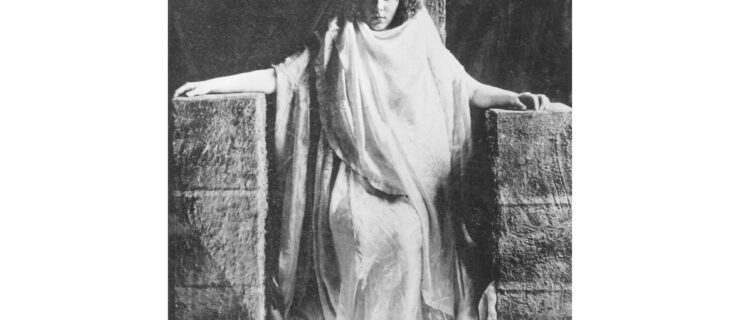Audience Appeal: How Much Should Artists Care About Viewers’ Opinions?
In 2017, Twyla Tharp presented “Minimalism and Me” at the Museum of Contemporary Art Chicago, a lecture/demonstration about works made between 1965 and 1970. Tharp reconstructed bits of her catalog culled from meticulously kept notes as a group of dancers performed beside her.
When I interviewed her ahead of the premiere, Tharp talked about how her relationship to the audience had changed. In the early days, she cared little for the audience’s opinion.
“It was not about the audience,” she said. “It was about what we were doing to make progress in our study of dance. The public was welcome to look, but whatever the public might be thinking about was not our problem, it was theirs.”
Many dancemakers today echo Tharp’s sentiments of the late ’60s, taking a Field of Dreams approach and making the dances they want to make with little to no interest in who comes to see them or why.
But by 1973, Tharp had already started to think more pointedly about the audience while making Deuce Coupe for The Joffrey Ballet. In an interview with Terry Gross earlier this year, she said she chose The Beach Boys’ music knowing it would be “very good for innervating and energizing both the dancers and the audience.” In the five decades that followed its creation, Tharp became increasingly invested in her viewers. “Bit by bit,” she said to me in 2017, “I’ve realized that subtext is of great interest to an audience, but they need to be directed to it.”
Artists have long grappled with the concept of “audience.” Add to this the capitalistic construct of art as a commodity and it gets even more complicated. To what extent should artists care what ticket buyers think? Does the power within a patron’s purse determine an artwork’s worth?
Some, like Tharp, see their relationship with the audience change over the course of their careers. Others look at the audience not as market research but artistic playthings, part and parcel to the work itself. (A few examples: Faye Driscoll’s Thank You for Coming: Attendance, d. Sabela grimes’ ELECTROGYNOUS and Urban Bush Women’s Hair & Other Stories.)
Improving accessibility as an equitable business practice—gender-neutral restrooms, relaxed performance atmospheres and captioning, as examples—has opened theater doors more widely so that more people may participate as audience members. The concept of “accessibility” as it relates to legibility, however, can be fraught. Artists of color are often unfairly and disproportionately burdened with explaining their work, asked to provide context at every turn, particularly when performing for a “general audience.”
Miguel Gutierrez has written about how white audiences are more comfortable with ambiguity and abstraction when it comes from white artists. This can and does privilege white artists whose work intentionally does not attempt legibility but is still deemed acceptable in larger, “mainstream” venues.
In a lengthy essay for Rescripted, an artist-led theater website, writer-director Monty Cole suggests that the financial model for theater is built by and for white people. If I apply this idea to dance, the concepts of “general,” “mainstream” and, even, “audience” are essentially euphemisms for old, white, wealthy ticket buyers perceived as propping up outdated financial models of larger dance institutions (mainly, ballet and ballet-adjacent contemporary companies).
“Thinking about a patron’s experience is not necessary to make good art, but it can influence both what you make and your capability to continue making.”
Lauren Warnecke
Cole suggests artists reject this notion and cease trying to appeal to the white gaze. Make the art you want to make and seek out the venues, presenters and audience members for which you don’t have to explain that art.
Another alternative? Reject the idea that artists are beholden to ticket buyers. Paraphrasing Tharp, the public is welcome to look, but whatever they might be thinking about is not the creator’s problem. Still, all artistic products, even the ones made in a vacuum, have to be paid for.
Two Chicago companies navigating these muddy waters are Cerqua Rivera Dance Theatre and Natya Dance Theatre. In 2015, Cerqua Rivera—a contemporary and jazz-based company led by Honduran choreographer Wilfredo Rivera—shifted its approach away from the churn-and-burn repertory-company model they’d followed for nearly 20 years. Now, for multiyear projects spanning topics like immigration, gender identity and social justice, they thrust open the studio doors and utilize audience feedback to steer the creative process.
When Hema Rajagopalan, artistic director of Natya Dance Theatre, started teaching more than 45 years ago, there were very few Indian immigrants living in her suburban community. To attract audiences, she started incorporating English translations in many of her bharatanatyam productions. As an influx of Indian immigrants has moved to Chicagoland, the imperative to explain intention and cultural context has become less important.
Cerqua and Natya are but two examples of dance companies using engagement as a road to sustainability. Thinking about a patron’s experience—and your capacity to grow your audience—is not necessary to make good art, but it can influence both what you make and your capability to continue making. Let us neither fault artists who desire a broad, multicultural, multiracial audience nor chastise those who reject notions of legibility, popularity and accessibility, which are sometimes misconstrued as synonymous.
As Adam Kirsch wrote in The New York Times in 2015, “Artists who are immensely popular in their day are not ‘following’ the audience in a mercenary sense. They are, rather, people whose spirits happen to find full expression in established, conventional forms. Such artists take their reward in the present, while the others, the ‘leaders,’ have no choice but to postpone their reward into the hypothetical future.”
There is risk and reward within each and every artistic choice. Artists ultimately have to decide what inspires them most, and with whom they want to share it.




